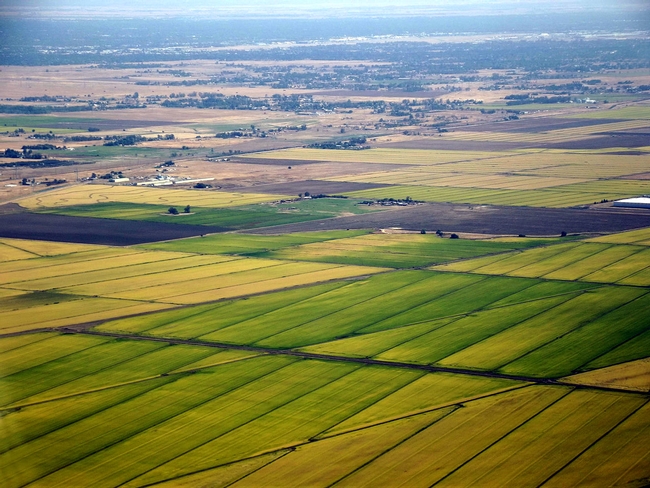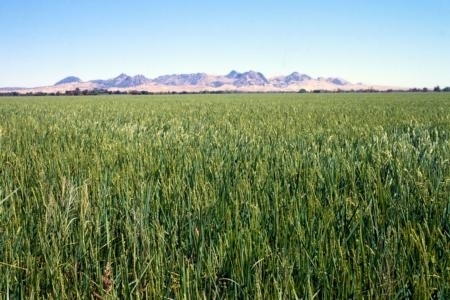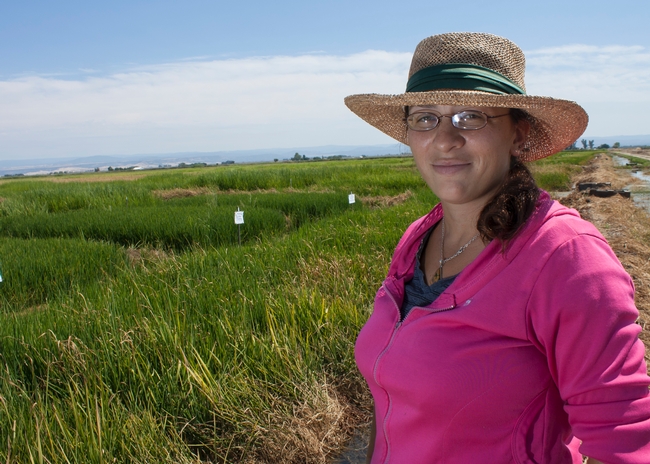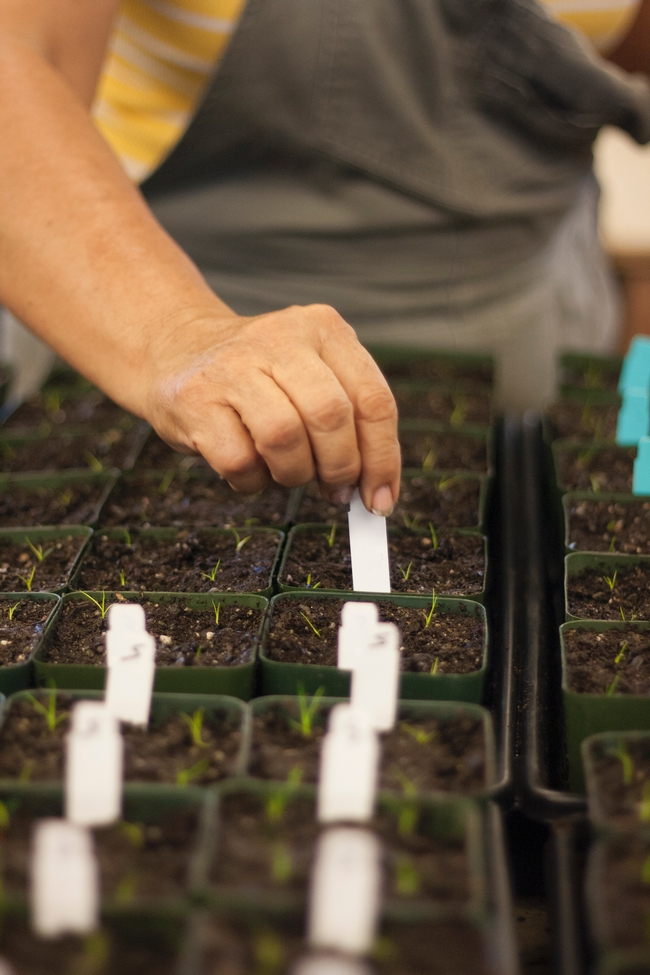Posts Tagged: rice
Rice planting proceeds despite drought
Water uncertainties delayed planting of the California rice crop, but it finally began the last week of April, reported Tim Hearden in Capital Press. The National Agricultural Statistics Service predicts 408,000 acres to be planted to rice in California in 2015.
“Planting is going full swing right now,” said Luis Espino, UC Agriculture and Natural Resources (UC ANR) rice crop advisor with UC Cooperative Extension in Colusa County. “With the water situation early on, everyone was expecting water deliveries to be a little late — the first week of May. Then it was actually delivered a little earlier than that.”
Planting is about two weeks ahead of schedule in Butte County, said Cass Mutters, a UC ANR CE rice farm advisor.
“This spring was unfortunately so dry and so warm that growers were out working their fields,” Mutters said. “As a result, the planting schedule is accelerated this year.”
Because water deliveries from the Sacramento and Feather rivers have been cut, some land that typically produces rice will be fallowed in 2015.
“It's hard to say how much, but my guess is it's going to be maybe 10 or 15 percent more than last year," Espino said. "Growers might not get surface water but might be able to pump here and there or get water from somewhere else. We'll see at the end what the actual acreage is.”
Rice planting moving along despite tight water supplies
Rice planting in California is well underway and taking place more quickly than expected, reported Heather Hacking in the Oroville Mercury Register.
Despite early worries about water supplies, Cass Mutters, UC Cooperative Extension advisor in Butte County, said 25 to 30 percent of rice acreage is planted; statewide about 10 to 15 percent of acreage has been planted. According to the article, rain in March delivered enough water to Lake Oroville for full water contracts to be honored.
Things could have turned out a lot worse, said Chris Greer, UCCE adviser in Sutter, Yuba, Sacramento and Placer counties.
A month ago it looked like 200,000 acres statewide would go without being planted, of a total of about 550,000 acres of rice land.
Greer told the reporter that farmers are still deeply concerned about the California water situation.
"It still worries you thinking about this winter," Greer said. "We're eking by as we can this year, but if we have another dry winter, I'm not sure we're going to be able to meet what we are delivering this year. That would be difficult."
Most rice is planted by airplane, but some farmers are experimenting with drill seeding. Drill seeding requires more labor, but results in more precise placement of seed and fertilizer in the fields.
Bee-ing There and Bee-Lieving in the Bees
Just call it a "practice run." Or a "buzz run." Barbara Allen-Diaz, vice president of the UC Agriculture and Natural Resources (UC ANR) vowed last...
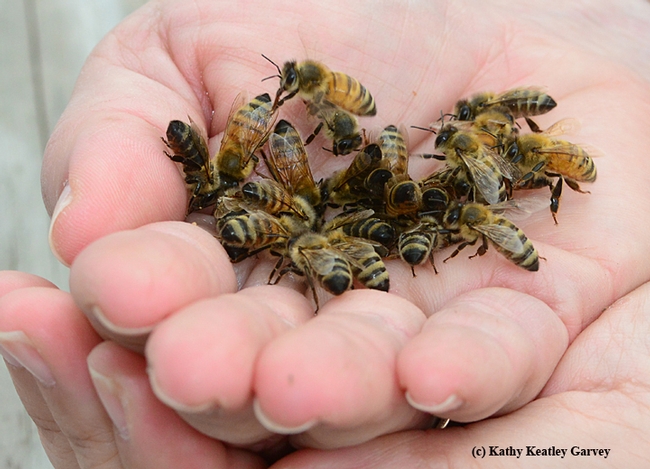
Honey bees in the hands of Pam Kan-Rice. (Photo by Kathy Keatley Garvey)
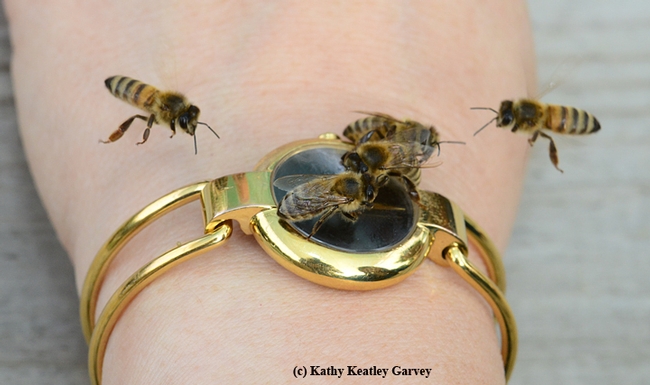
Making a beeline for her watch. (Photo by Kathy Keatley Garvey)
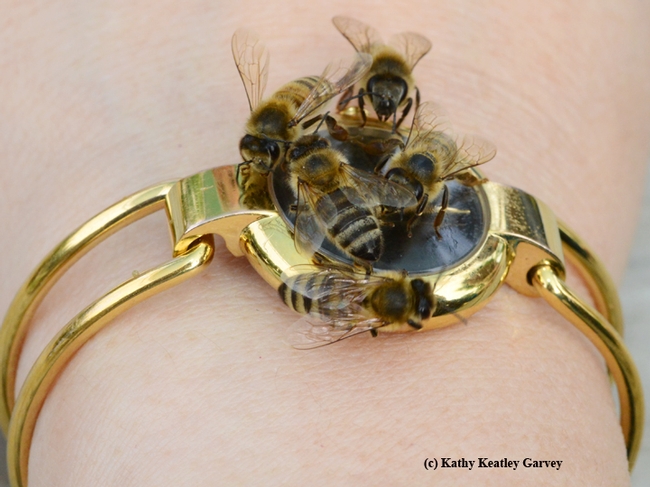
Bee watch. (Photo by Kathy Keatley Garvey)
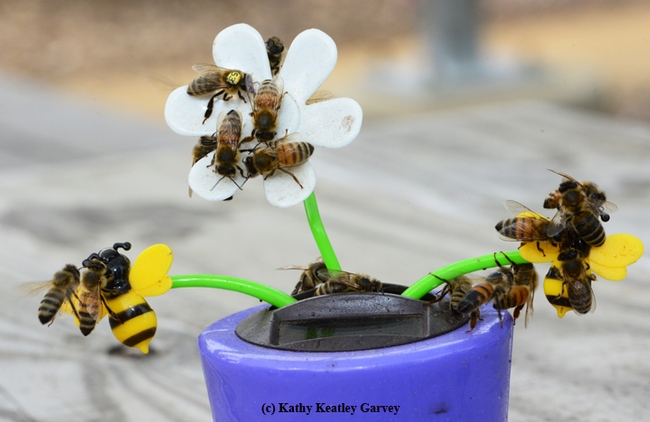
Bees are drawn to the special artificial nectar placed on a plastic plant. (Photo by Kathy Keatley Garvey)
A Book You Can't Refuse
If you want to learn more about ants, especially those in New York City, then here's a newly published book you can't refuse. And it's not only a...
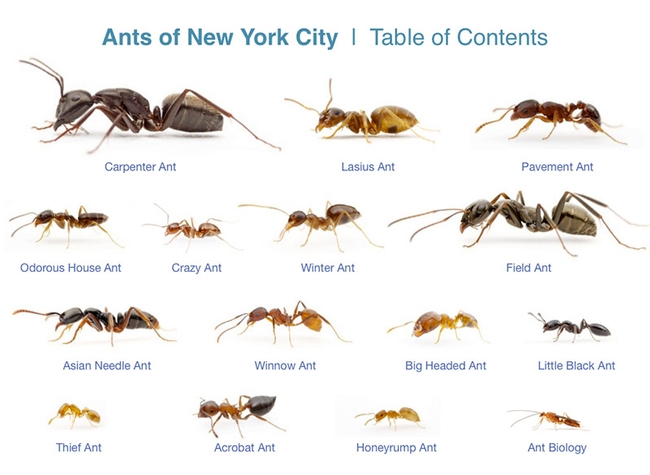
Ants by Alexander Wild.
A report from the war on weeds
Over the last three millennia, the practice of growing rice has evolved and spread throughout much of the globe. From China, through India, to Greece and parts of the Mediterranean and from Europe to the Americas, rice has demonstrated its versatility in desert regions and wetland deltas alike. Abundant in carbohydrates, it is today one of the world’s most widely eaten foods.
While University of California researchers develop rice varieties more tolerant to the modern challenges of climate change — flooding, heat stress, drought — California rice farmers each year discover more new threats in the form of non-native and herbicide-resistant weeds. So well adapted are these weeds that if left unmanaged, they cause rice yields in some places to plummet to nearly nothing.
The introduction of rice to California in 1912 was fraught with weed challenges from the start. The traditional dry-seeding method allowed barnyard grass to quickly overrun fields. While a new water-seeding technique suppressed the weed, it led to a whole other set of problems. In continuously flooded fields — still the most widely used practice in California today — an imported weed, late watergrass, flourished. Aquatic weeds took advantage of the new environment while others gradually became more flood tolerant. For many years, advanced herbicides allowed farmers to gain ground over these weeds.
Then, beginning in the early 1990s, several weed species, including late watergrass, were found to be evolving resistance against the most powerful herbicides. A metabolic resistance to one herbicide, researchers discovered, could lead to resistance for another.
Weeds also found new ways to outcompete rice. One invasive weed, Ludwigia, grows fast and tall — as high as 10 feet. Shadowing the rice plants, it spawns tiny seeds that travel well in water. Other weeds, meanwhile, are small and run along the ground to avoid combines and some emerge earlier in the season than rice, dominating resources.
In the Department of Plant Sciences at UC Davis, professor Albert Fischer’s laboratory is battling rice weeds on a variety of fronts: by researching the evolution and mechanisms of herbicide resistance, finding traits that make rice varieties more competitive, developing resistance techniques through field testing at the industry-supported Rice Experiment Station in Biggs, Calif., and by encouraging farmers to diversify management methods.
One system Fischer encourages is the stale seedbed technique, which allows weeds to emerge first from a reserve of seeds in the soil. Once that flush is up, farmers use a general herbicide to kill the weeds. At least one local farmer with a bad weed problem has controlled late watergrass this way. By replacing herbicides with shallow tilling, organic farmers can use this method.
With each management system is a different combination of growing techniques and herbicides, depending on weather, soil moisture and soil temperature, among other factors. Fischer’s team at the experiment station spends much of its time testing these herbicides on new weeds.
UC Cooperative Extension farm advisors encourage growers to also sanitize equipment, rotate crops, scout for surviving weeds and apply herbicide only when necessary, easing selection pressure on weeds while reducing environmental impact. Along that line, Fischer’s team is discovering how switching growing techniques and irrigation systems may be helping farmers meet higher environmental standards, addressing a trend of steeper water prices in California. Other researchers see this as an opportunity to reduce greenhouse gases released from decaying rice stalks post-harvest.
For each strategy, researchers weigh costs over benefits to select the right weapons for arming farmers entangled in this ongoing war with weeds.


